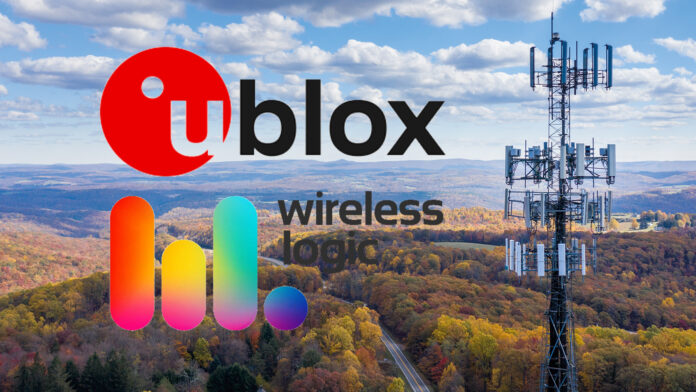Swiss IoT module maker u-blox is working with UK-based IoT connectivity provider Wireless Logic to combine and integrate their wares in simpler and better IoT solutions for IoT developers, they have said. They have proclaimed a “strategic partnership” to deliver “seamless, robust, and scalable” connectivity solutions for “reliable IoT deployments across various industries”. They cited automotive, industrial, healthcare, and smart cities as prime target ‘verticals’.
The deal will see Wireless Logic’s global IoT virtual operator network (MVNO) platform, branded Conexa, integrated via embedded SIM (eSIM) hardware into select u-blox cellular IoT modules. Customers will be able to switch between Wireless Logic’s roster of global mobile networks in the Conexa platform for optimal coverage and performance, as required, without the need for physical SIM changes. A press statement talked-up “unparalleled scalability and flexibility”, as a result.
The duo said: “The ability to manage and monitor connectivity through Wireless Logic’s intuitive platform will provide users with greater control and visibility over their IoT deployments.” As well as easier global scalability, they said the combination will enable IoT developers to get products to market (TTM) faster, and to also deliver more rapid innovation.
Martin Leach, head of u-blox’s cellular business unit, said: “Wireless Logic’s… leading eSIM solutions and technical expertise aligns with our commitment to delivering state-of-the-art products that meet the evolving needs of our customers. By combining our technologies, we are enhancing the value proposition for IoT deployments, providing unmatched connectivity, security, and flexibility.”
John Dillon, managing director of product and marketing at Wireless Logic, said: “This… marks a significant milestone in our mission to simplify IoT connectivity… By combining our connectivity services with u-blox’s high-performance cellular modules, we are enabling businesses to deploy IoT solutions more efficiently and cost-effectively. We look forward to seeing the innovative devices and applications that our combined offering will create.”
Meanwhile, u-blox leads has introduced a new low-power IoT asset tracking service, called u-blox CloudTrack, which combines reliable GNSS positioning with data comms, cloud analytics, and superior energy savings in a single service. It said the service “breaks new ground” by combining “the ultimate” in low-power positioning” – six-times energy savings, it says, compared to a standalone GNSS fix from a ‘cold start’ – with integrated IoT connectivity and cloud services.
The CloudTrack service calculates the position of an IoT device using a combination of data from GNSS, cellular, and Wi-Fi sources – including where a GNSS signal is limited or unavailable, and a location fix would be challenging and also drain the battery. It is being offered with a single u-blox Thingstream SIM card, which attaches to its cloud-based delivery platform and administration interface and connects globally, and a per-location-request pricing model
The idea is customers can eliminate the complexity and inconvenience of dealing with multiple location data and regional connectivity providers, using a single-provider solution based on a single module stock-keeping unit (SKU) for global asset tracking. CloudTrack works “optimally” with u-blox cellular ”combo” modules, the company said, notably its LENA-R8 LTE Cat 1bis module with integrated M10 GNSS receiver.
Separately, Wireless Logic has said it is exhibiting and speaking at the upcoming Engineering Design Show on October 9-10 in London to “help device manufacturers, integrators and design engineers navigate current connectivity trends”. The company said: “As cellular IoT continues to advance and grow in complexity… some engineers might feel overwhelmed… The first hurdle is often identifying where to focus, which can be as daunting as the technical issues themselves.”

